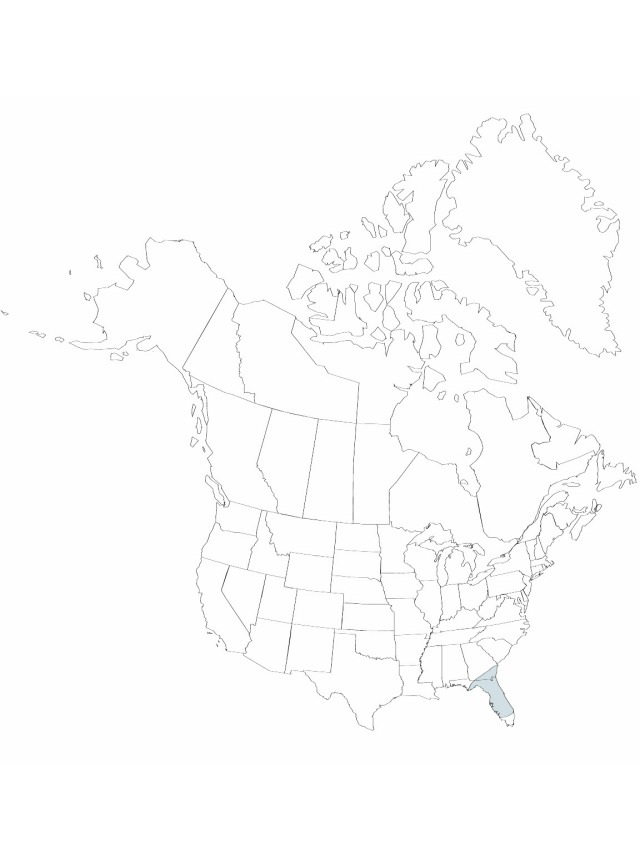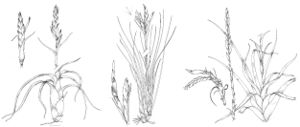Tillandsia bartramii
Sketch Bot. S. Carolina 1: 379. 1817.
Plants densely clustering, flowering to 20–40 cm. Stems short. Leaves 15–30, many-ranked, erect to spreading, gray, 15–40 × 0.2–0.5 cm, coarsely appressed-scaly; sheath rust-colored toward base, broadly triangular, flat, not forming pseudobulb, 1–2 cm wide; blade linear-subulate, leathery, margins involute, apex attenuate. Inflorescences: scape conspicuous, erect, 8–15 cm, 2–4 mm diam.; bracts densely imbricate, erect; sheath of bracts narrowing gradually into blade; spikes erect, simple or palmate, linear, compressed, 2–4 × 1 cm, apex acute; simple or lateral branches 1–5. Floral bracts imbricate, erect, uniformly red to rose, broad (covering all or most of rachis, rachis not visible at anthesis), elliptic, keeled apically, 1.4–1.7 cm, thin-leathery, base not visible at anthesis, apex acute, surfaces scaly distally, becoming sparsely scaly toward base, venation slight. Flowers 5–20, conspicuous; sepals with adaxial pair connate, elliptic, keeled, to 1.5 cm, thin-leathery, veined, apex obtuse, surfaces scaly; corolla tubular, petals erect, violet, ligulate, 3–4.5 cm; stamens exserted; stigma exserted, conduplicate-spiral. Fruits 2.5–3 cm.
Phenology: Flowering spring–summer.
Habitat: Epiphytic on a variety of hosts in swamps and hammocks
Elevation: 0–60 m
Distribution

Fla., Ga., Mexico (Tamaulipas).
Discussion
Selected References
None.
